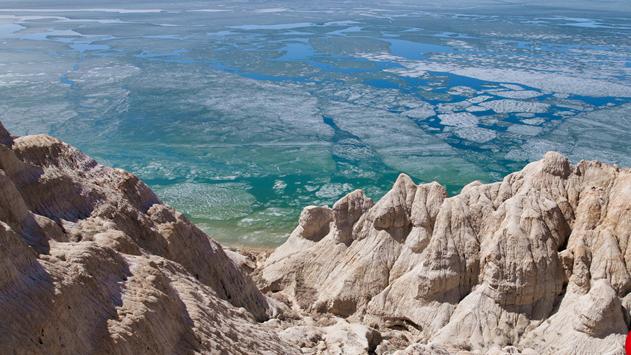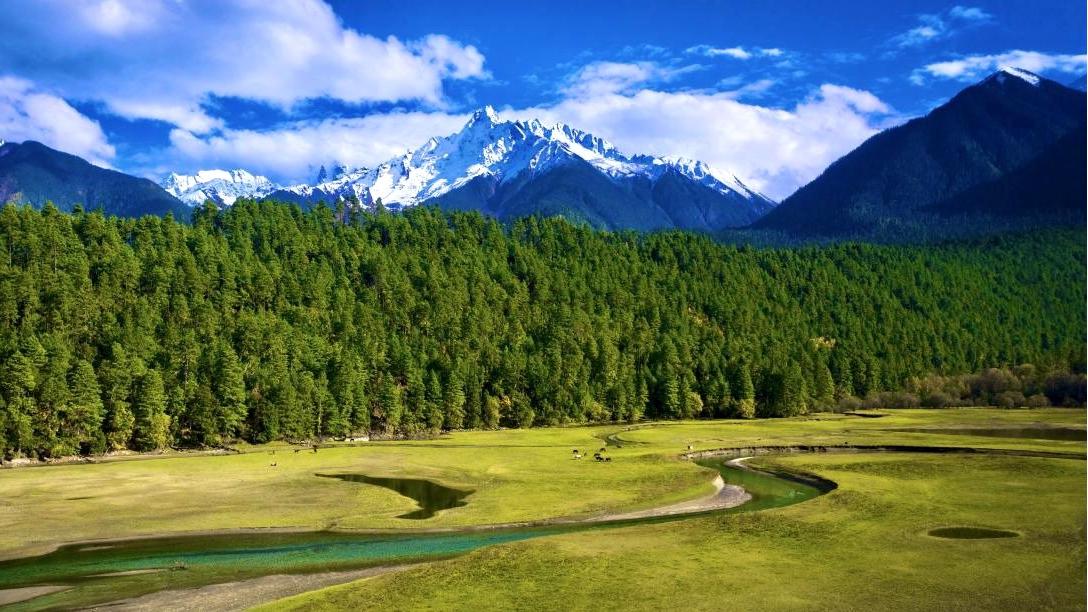China's Hangjin Banner vows to continue desert greening efforts
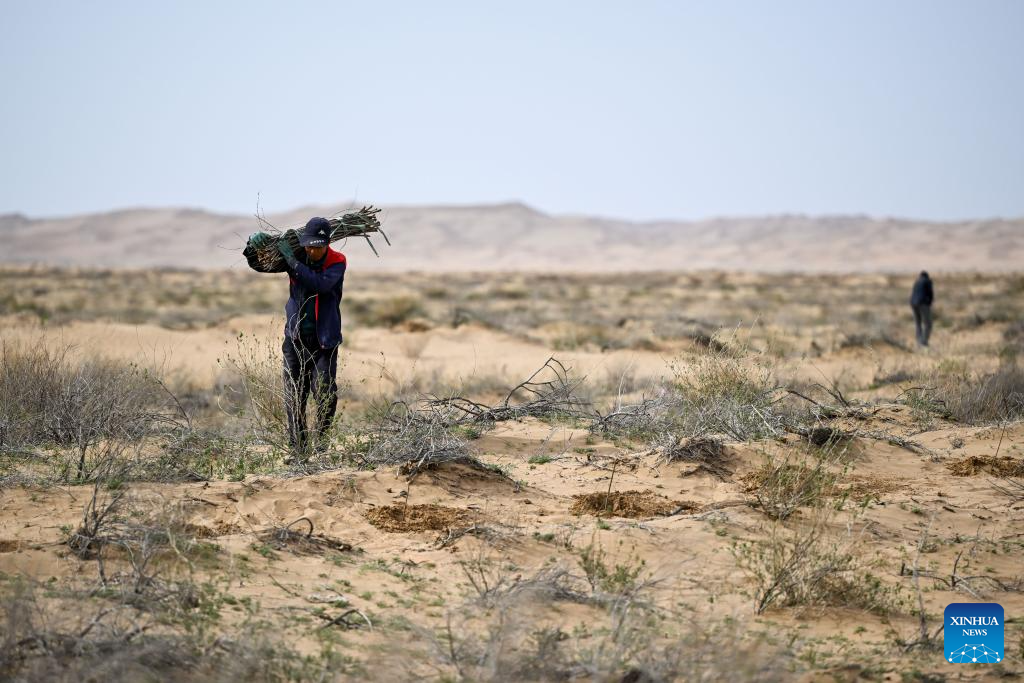
A worker shoulders salix mongolia, a drought-resistant willow tree species, at the Kubuqi desert in Hangjin Banner, north China's Inner Mongolia Autonomous Region, April 28, 2025.
Local authorities of Hangjin Banner have vowed to continue desert greening efforts, setting this year's afforestation target at 1 million mu (about 66,667 hectares) while implementing 5 sand control programs. (Xinhua/Li Zhipeng)
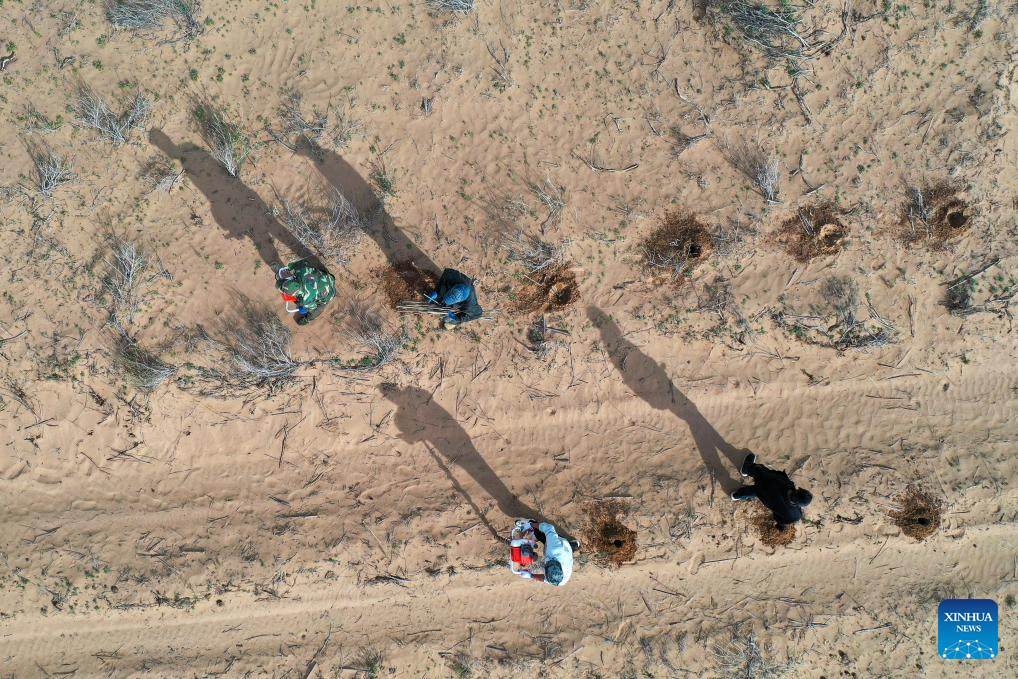
An aerial drone photo shows workers planting salix mongolia, a drought-resistant willow tree species, at the Kubuqi desert in Hangjin Banner, north China's Inner Mongolia Autonomous Region, April 28, 2025.
Local authorities of Hangjin Banner have vowed to continue desert greening efforts, setting this year's afforestation target at 1 million mu (about 66,667 hectares) while implementing 5 sand control programs. (Xinhua/Li Zhipeng)
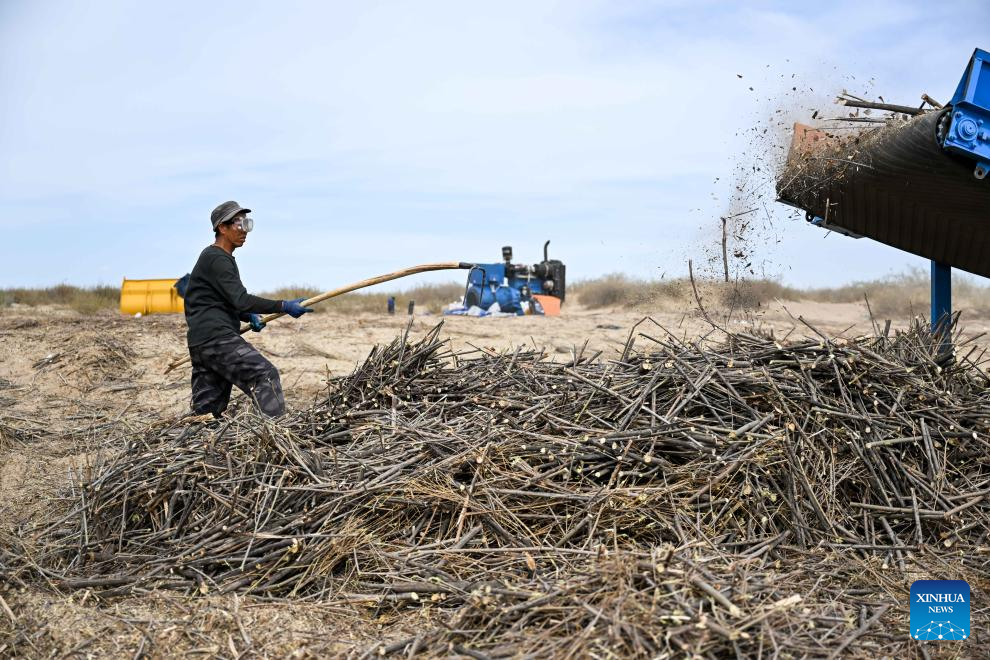
A worker arranges trimmed salix mongolia, a drought-resistant willow tree species, at the Kubuqi desert in Hangjin Banner, north China's Inner Mongolia Autonomous Region, April 28, 2025.
Local authorities of Hangjin Banner have vowed to continue desert greening efforts, setting this year's afforestation target at 1 million mu (about 66,667 hectares) while implementing 5 sand control programs. (Xinhua/Li Zhipeng)
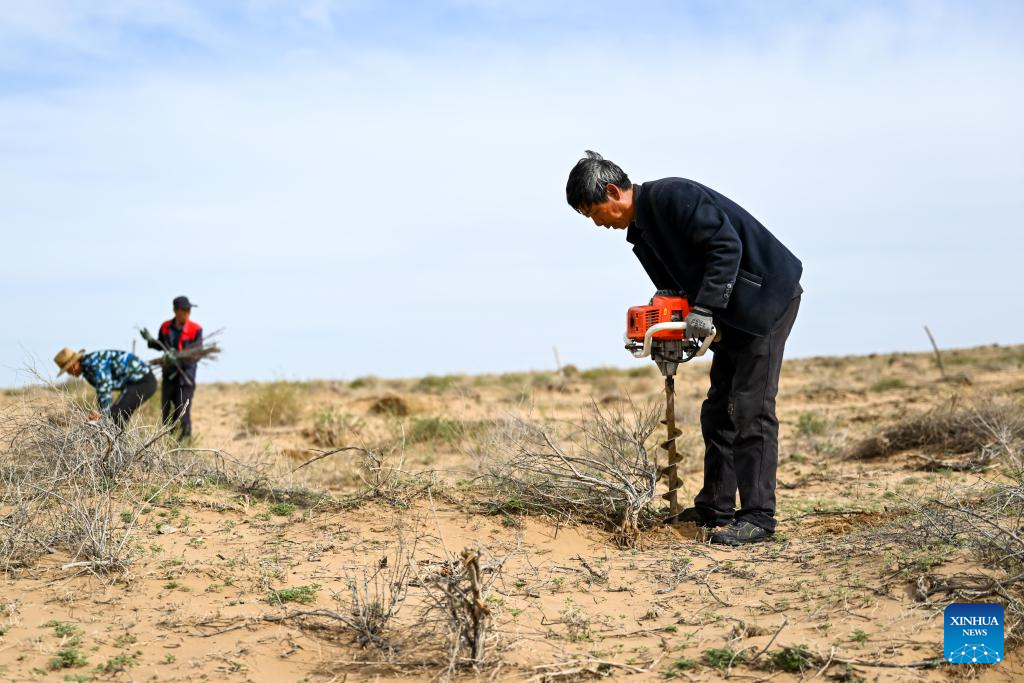
Workers plant salix mongolia, a drought-resistant willow tree species, at the Kubuqi desert in Hangjin Banner, north China's Inner Mongolia Autonomous Region, April 28, 2025.
Local authorities of Hangjin Banner have vowed to continue desert greening efforts, setting this year's afforestation target at 1 million mu (about 66,667 hectares) while implementing 5 sand control programs. (Xinhua/Li Zhipeng)
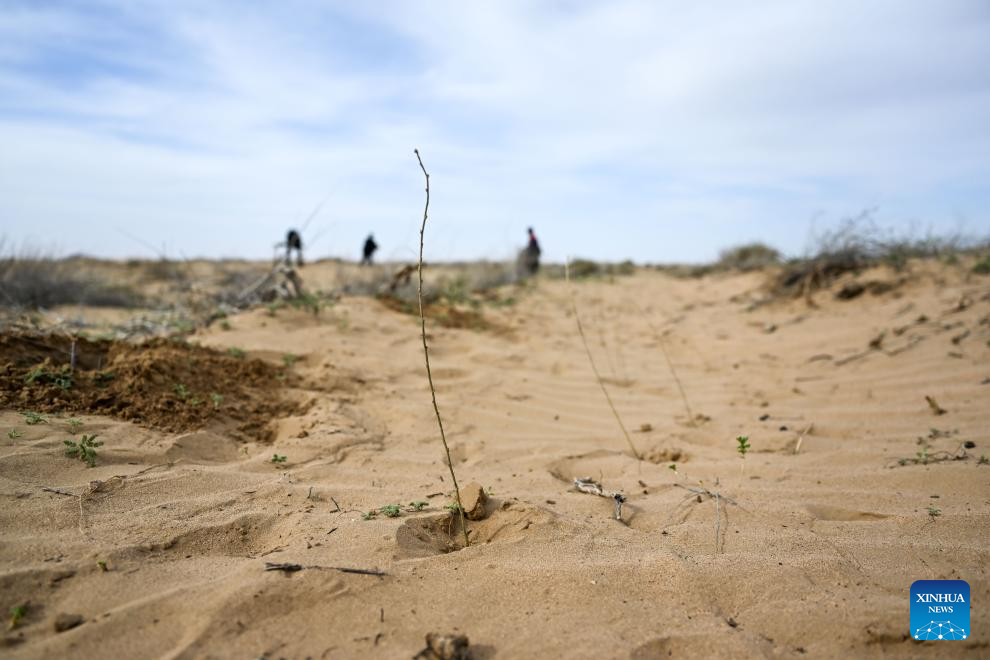
This photo shows caragana seedlings planted at the Kubuqi desert in Hangjin Banner, north China's Inner Mongolia Autonomous Region, April 28, 2025.
Local authorities of Hangjin Banner have vowed to continue desert greening efforts, setting this year's afforestation target at 1 million mu (about 66,667 hectares) while implementing 5 sand control programs. (Xinhua/Li Zhipeng)
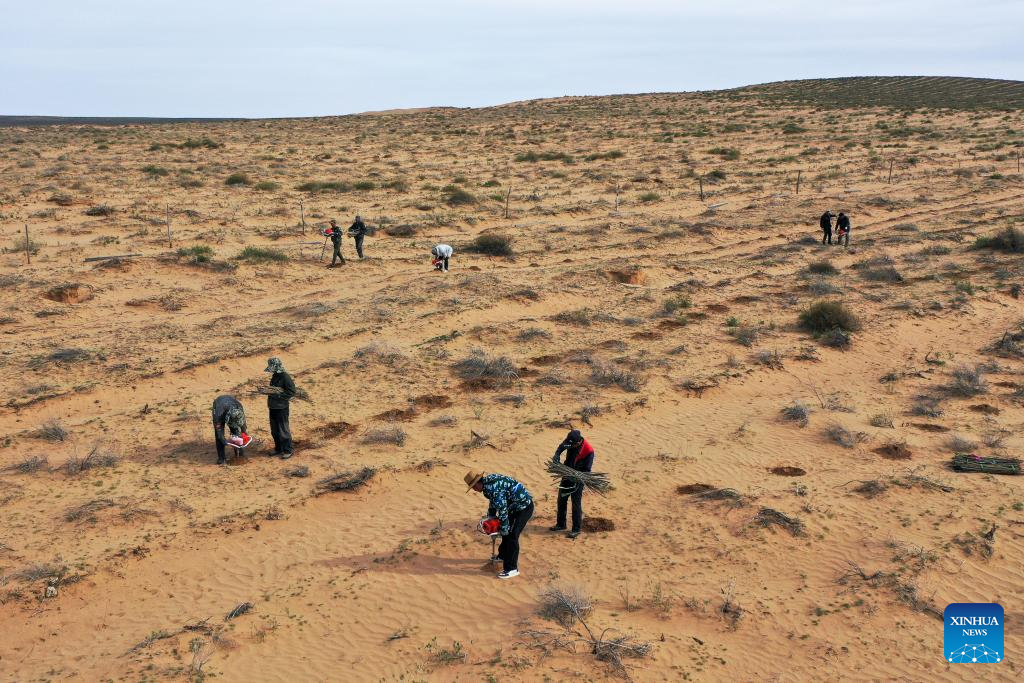
A drone photo shows workers planting salix mongolia, a drought-resistant willow tree species, at the Kubuqi desert in Hangjin Banner, north China's Inner Mongolia Autonomous Region, April 28, 2025.
Local authorities of Hangjin Banner have vowed to continue desert greening efforts, setting this year's afforestation target at 1 million mu (about 66,667 hectares) while implementing 5 sand control programs. (Xinhua/Li Zhipeng)
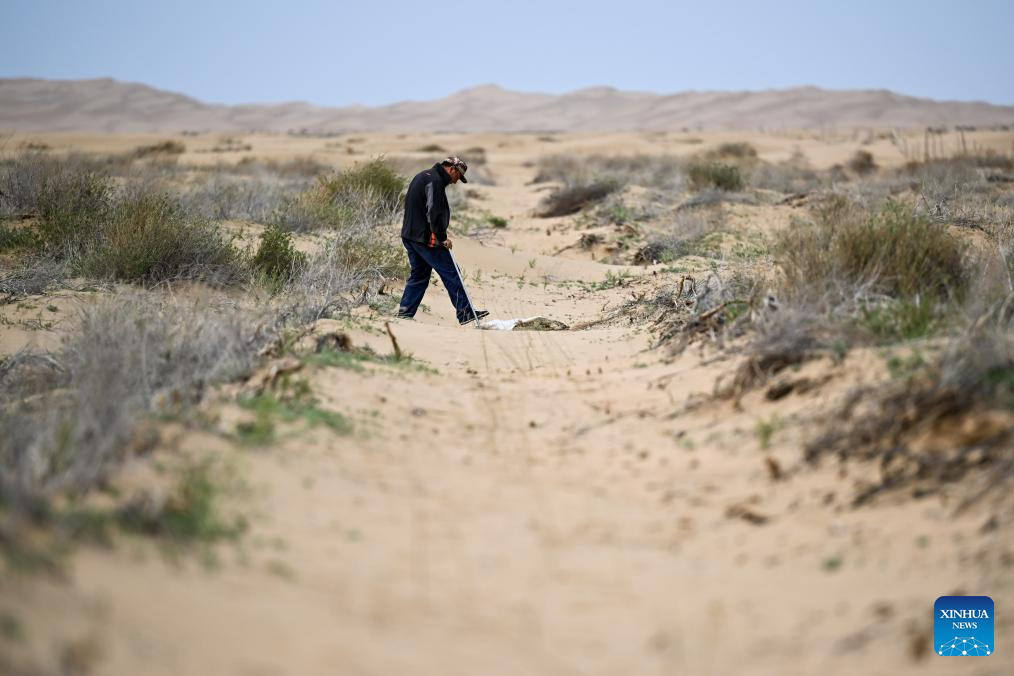
A worker plants caragana seedlings at the Kubuqi desert in Hangjin Banner, north China's Inner Mongolia Autonomous Region, April 28, 2025.
Local authorities of Hangjin Banner have vowed to continue desert greening efforts, setting this year's afforestation target at 1 million mu (about 66,667 hectares) while implementing 5 sand control programs. (Xinhua/Li Zhipeng)
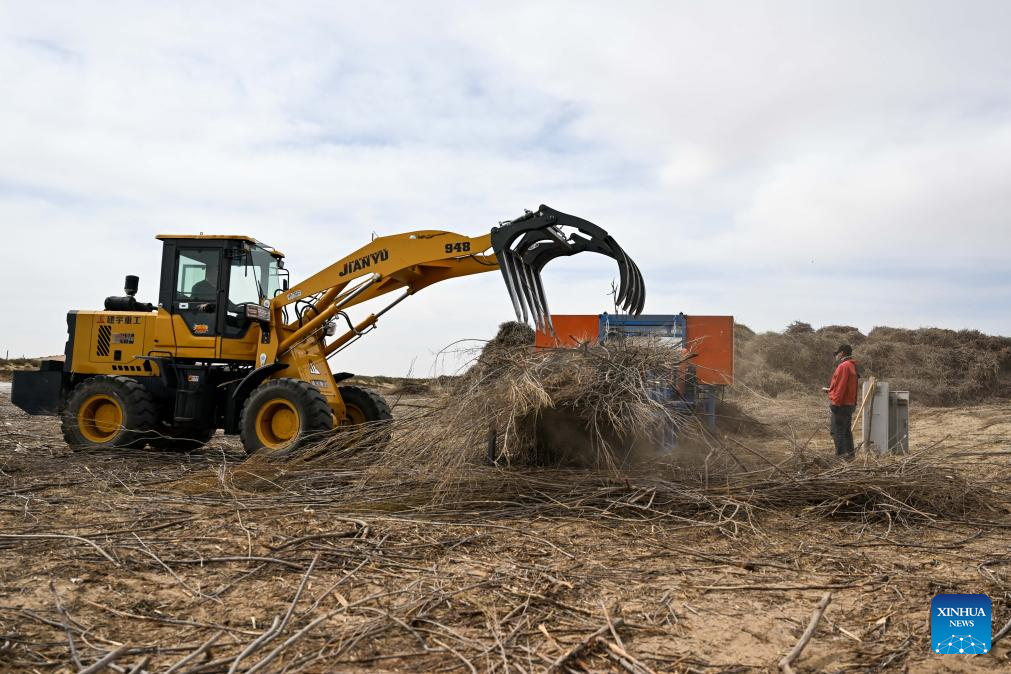
A worker operates a machine to cut salix mongolia, a drought-resistant willow tree species, at the Kubuqi desert in Hangjin Banner, north China's Inner Mongolia Autonomous Region, April 28, 2025.
Local authorities of Hangjin Banner have vowed to continue desert greening efforts, setting this year's afforestation target at 1 million mu (about 66,667 hectares) while implementing 5 sand control programs. (Xinhua/Li Zhipeng)

Workers plant salix mongolia, a drought-resistant willow tree species, at the Kubuqi desert in Hangjin Banner, north China's Inner Mongolia Autonomous Region, April 28, 2025.
Local authorities of Hangjin Banner have vowed to continue desert greening efforts, setting this year's afforestation target at 1 million mu (about 66,667 hectares) while implementing 5 sand control programs. (Xinhua/Li Zhipeng)
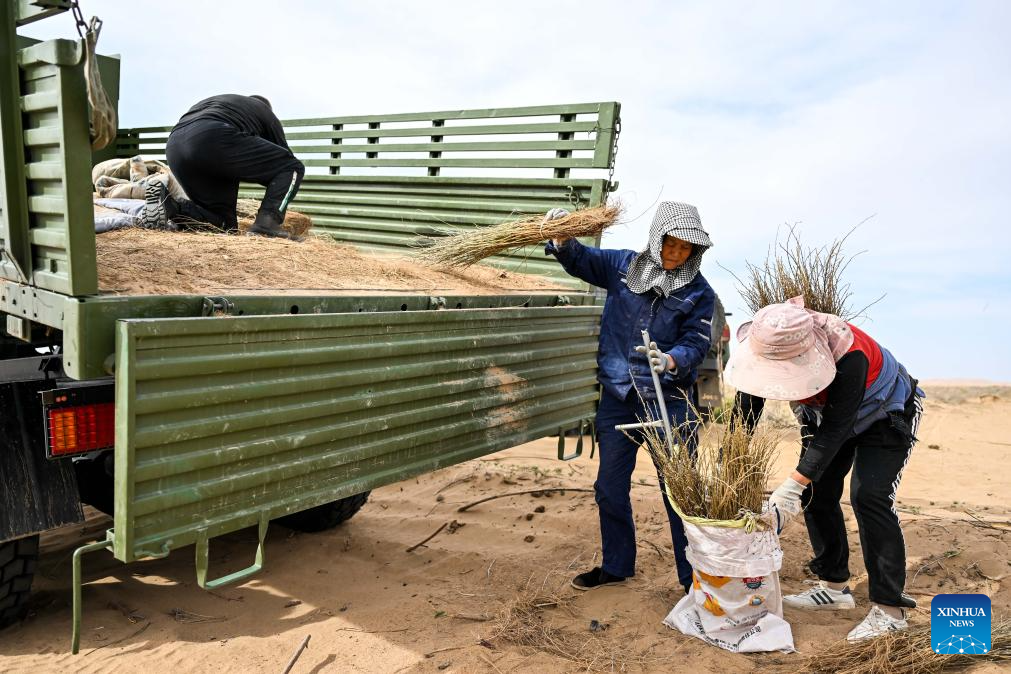
Workers move caragana seedlings at the Kubuqi desert in Hangjin Banner, north China's Inner Mongolia Autonomous Region, April 28, 2025.
Local authorities of Hangjin Banner have vowed to continue desert greening efforts, setting this year's afforestation target at 1 million mu (about 66,667 hectares) while implementing 5 sand control programs. (Xinhua/Li Zhipeng)
Photos
Related Stories
- Decades-long efforts turn north China deserts into oases
- Snowy fog transforms NW China's Kumtag Desert
- China lauded for combating desertification
- Magnificence of Badain Jaran Desert in 30 seconds
- Desert tourism developed in parallel with ecological protection in Dalad Banner, N China
- View of Badain Jaran Desert in N China's Inner Mongolia
- Tree-lined highway traverses China's largest desert
- China makes promising start in battle to tame sandstorm corridor
- China builds "photovoltaic Great Wall" against desertification in Kubuqi Desert
- Desert restored via grassland protection
Copyright © 2025 People's Daily Online. All Rights Reserved.








